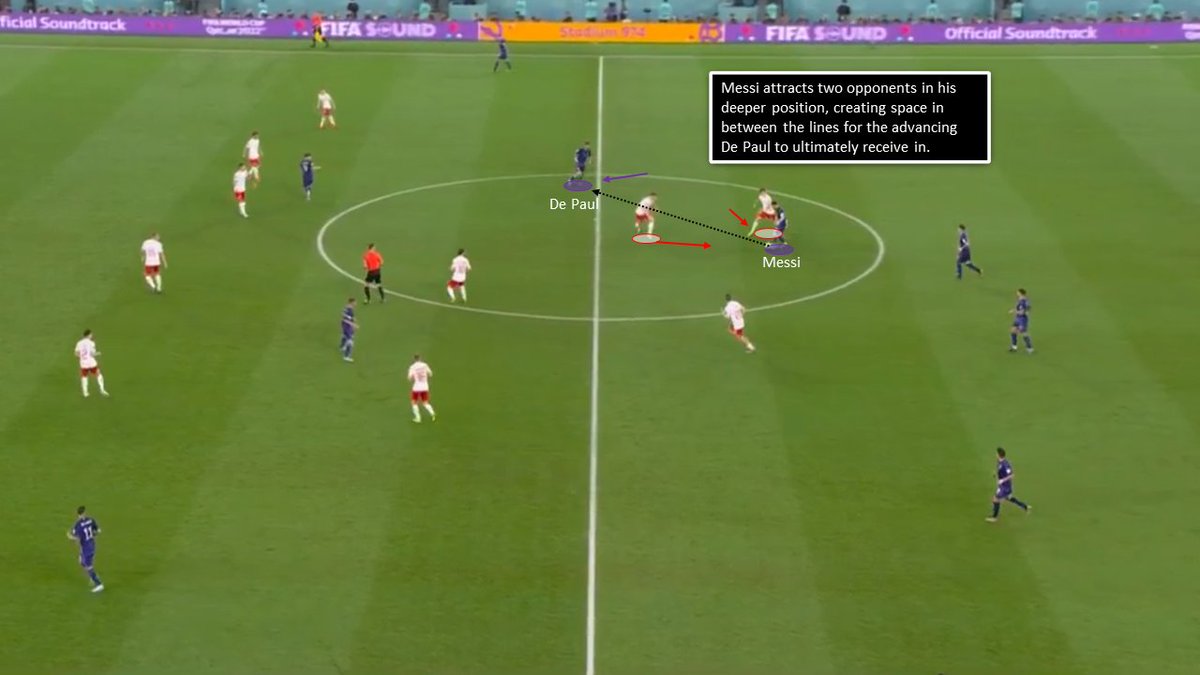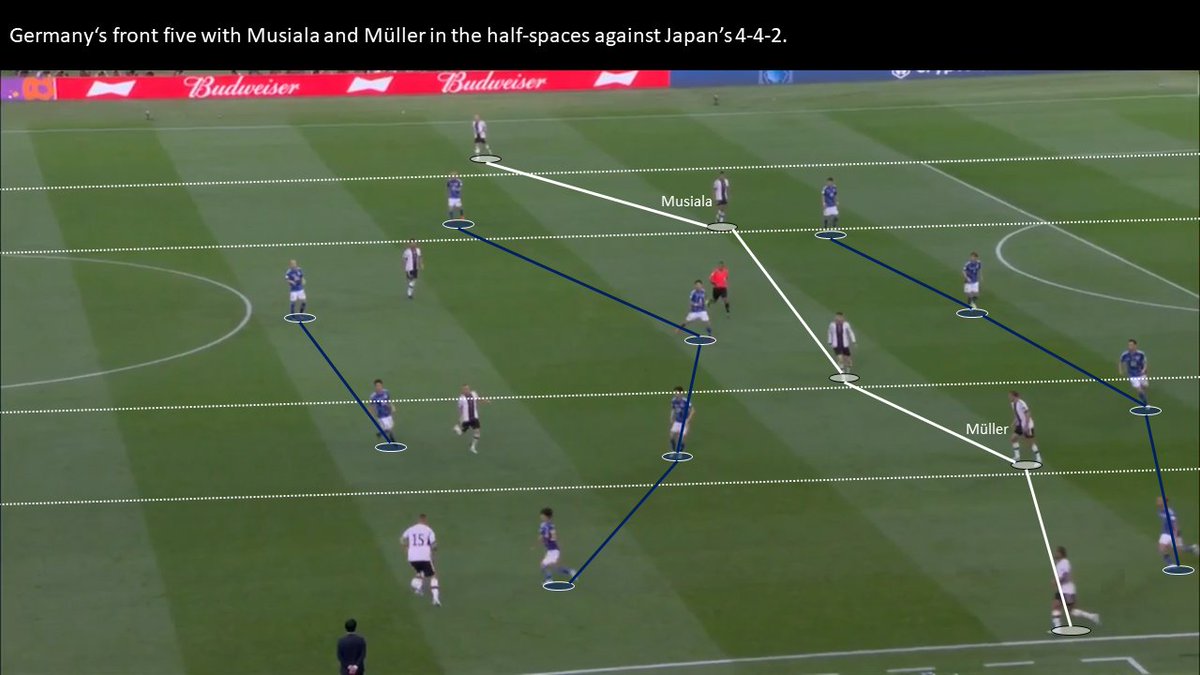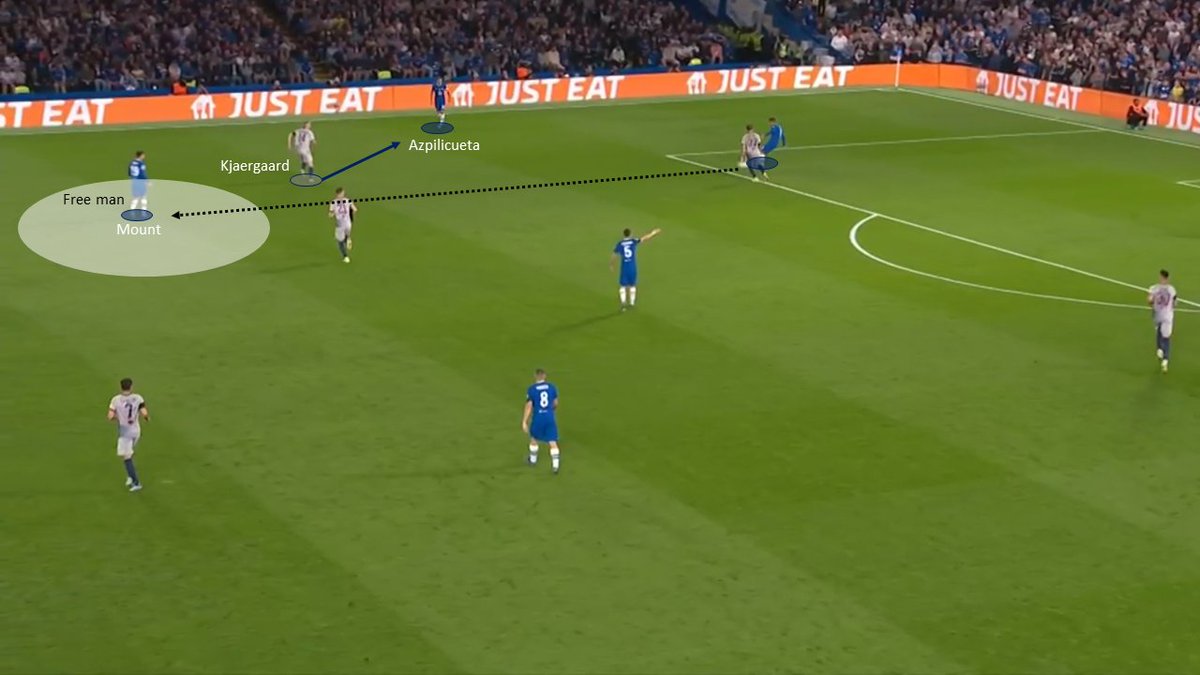
Aspect Analysis: Argentina’s flexible attacking dynamics vs. Poland #POLARG [THREAD]
The Argentinians formed somewhat of a 3-2-5/3-1-6 structure in possession, which was highly interchangeable.



The Argentinians formed somewhat of a 3-2-5/3-1-6 structure in possession, which was highly interchangeable.




A key mechanism for Argentina’s progression and chance creation was the vertical rotation between Messi and De Paul. Messi regularly moved deeper, with De Paul advancing to fill the right half-space. This either allowed Messi to create from deep or De Paul to receive higher up. 







From this deeper position, Messi continuously made diagonal switches to the left side to find the overlapping Acuna creating a 2v1 situation and getting in behind with a dynamical advantage. Moreover, pinning Poland’s right fullback was key to open the left wing for Acuna. 







MacAllister was another important asset in Argentina’s offensive play. Constantly positioning himself in a pocket in between the lines either allowing himself to receive or creating space for someone else by pinning Poland’s defenders. 







Furthermore, Argentina’s right side could regularly rotate with De Paul moving deeper and Molina advancing. This interchange presented a dilemma for Poland and continuously created an overload out wide. 







Additionally, Alvarez’s off-the-ball movements were vital as well. The Argentinian looked to exploit spaces in behind on the blind-side, make double movements to create space for himself or pin players through decoy movements. 







Argentina’s first goal was a prime example, where they used some of their key attacking patterns: progressing through the overload on the right side, Alvarez opening the cutback and MacAllister netting in after a clever movement. 







With the introduction of Paredes, Argentina slightly changed their shape to a 2-3-5, creating a more stable rest-defence and improving the ability to counterpress directly after losing the ball. 

Conclusion:
Argentina dominated Poland with their amazing attacking play and had their best game of the tournament so far. If they can keep this level or even improve, there’s no limit for this team.
Argentina dominated Poland with their amazing attacking play and had their best game of the tournament so far. If they can keep this level or even improve, there’s no limit for this team.
• • •
Missing some Tweet in this thread? You can try to
force a refresh

















































